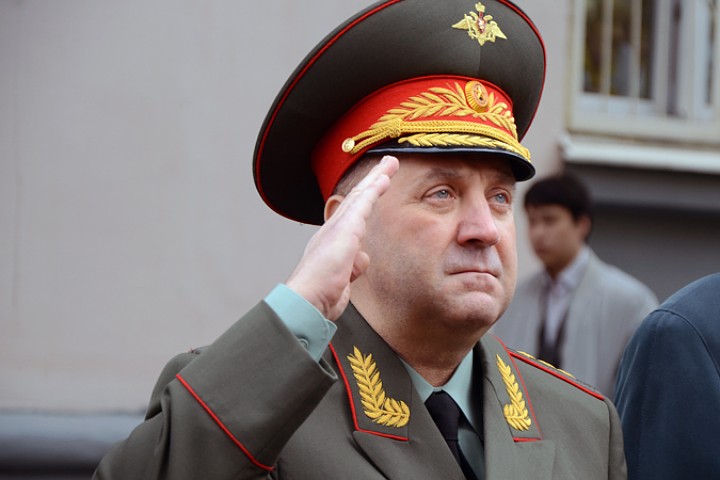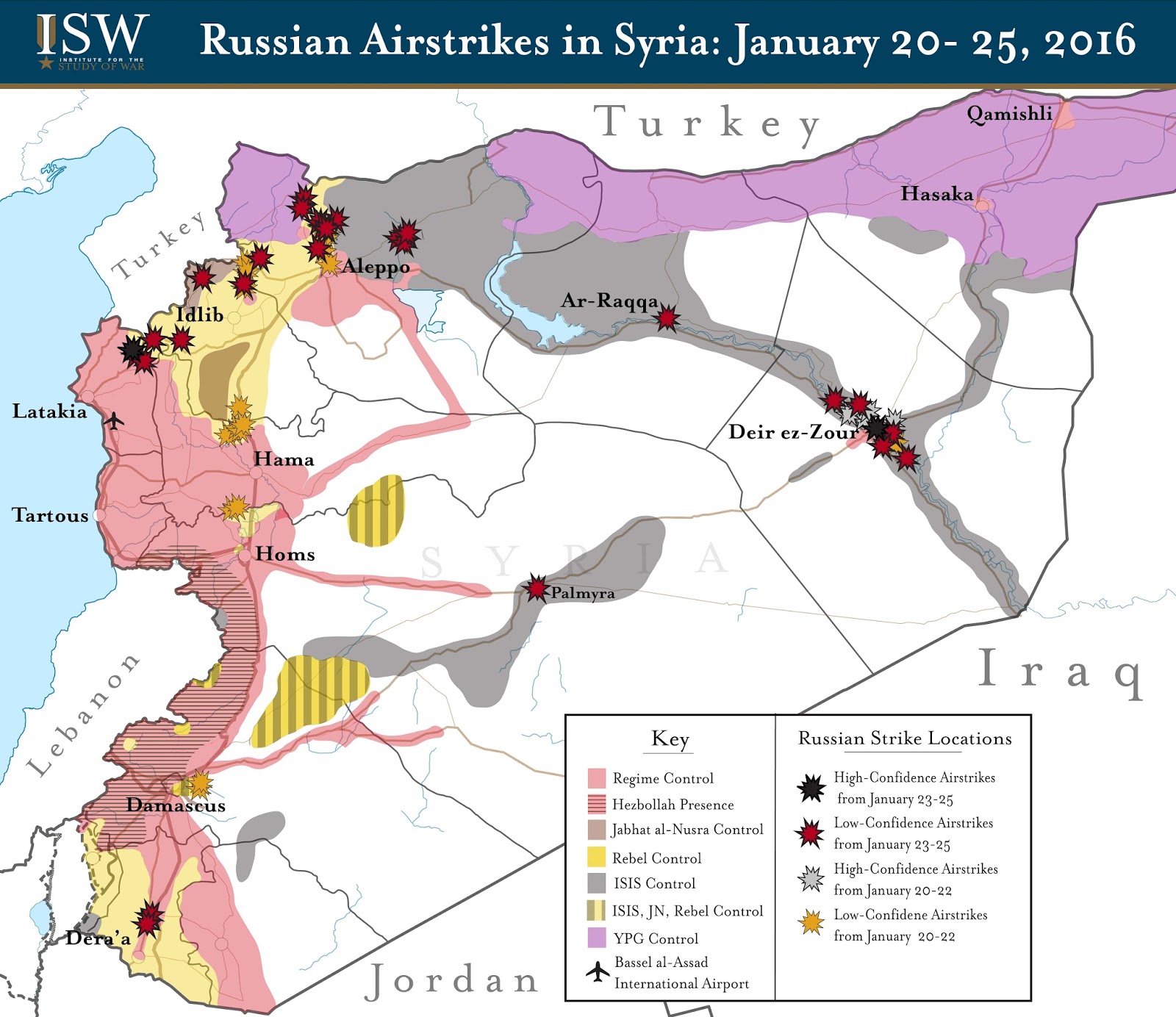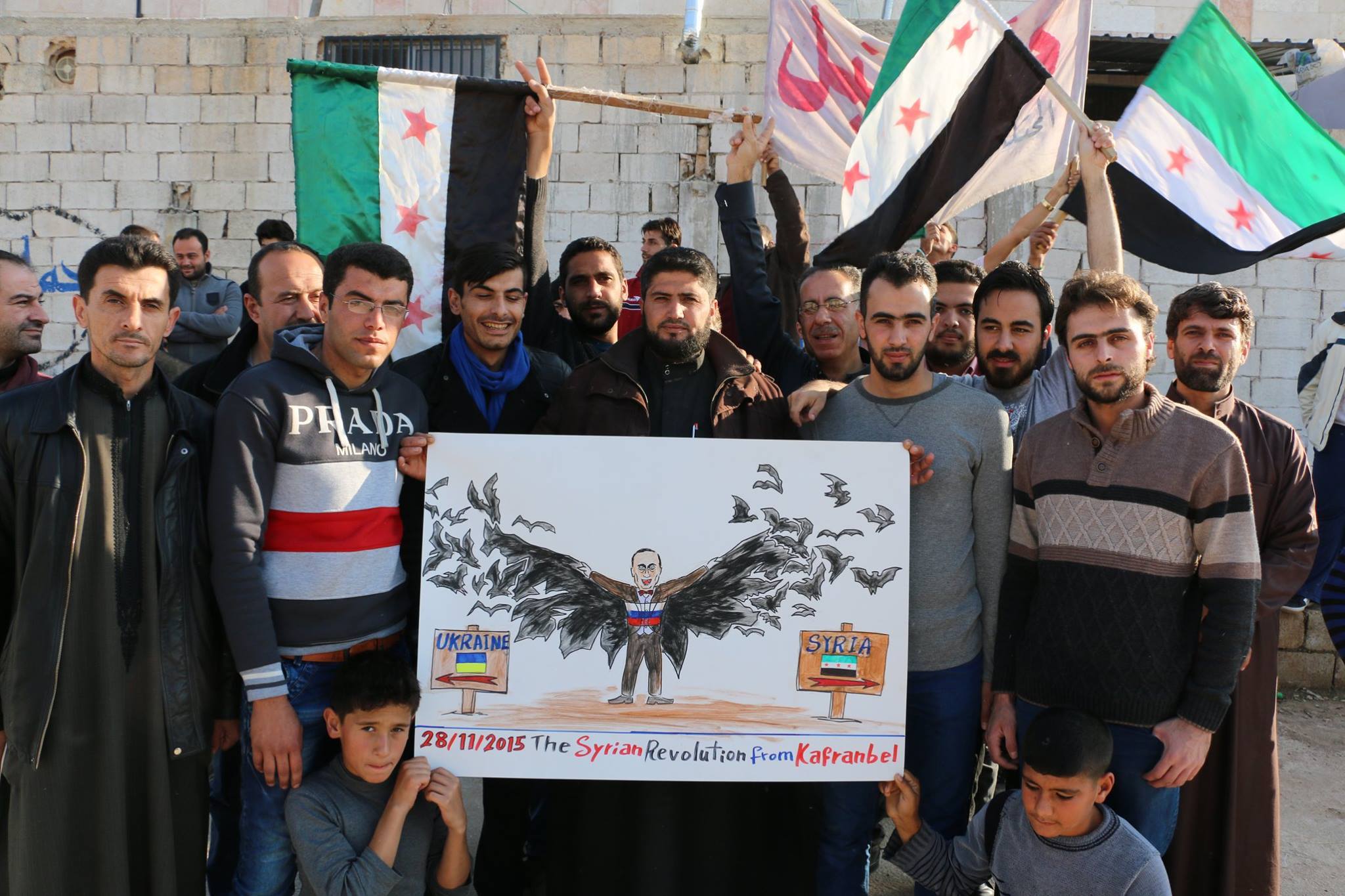Live Updates: A major Syrian rebel group now says that Assad is “absolutely reliant” on Russian airstrikes and foreign fighters.
The previous post in our Putin in Syria column can be found here.
Business Insider has spoken to a series of experts about last week’s rumor that Russia told Syrian President Bashar al-Assad to step down in Syria. The overwhelming consensus, however, is that Russia needs Assad to stay in power and is doing everything in its power to ensure that he does:
“The biggest myth out there is the existence of ‘state institutions’ separate from Assad,” Tony Badran, a Middle East expert at the Foundation for Defense of Democracies, told Business Insider in October.
To that end, many experts insist that Russia’s stake in Syria is much bigger than Tartous.
“It is the perception of thwarting violent regime change — not a naval gas pump in Tartous — that is most important to Vladimir Putin,” Frederic C. Hof, a former special adviser for transition in Syria under US President Barack Obama and now a senior fellow at the Atlantic Council, wrote in The Huffington Post on Monday.
Maintaining that perception is important, some experts say, because it helps Russia present itself to the international community as an agent of stability and bulwark against terrorism. Moscow has long considered any and all opponents to Assad’s regime, including those supported by the US, to be “terrorists.”
The Russian government has denied that it has ever asked Syria’s president to step down, and the entire goal of Russia’s air campaign appears to be aimed at propping him up. Furthermore, even as Assad has rejected plans for transitioning from power, Russia has continued to back both the Assad and the peace talks which rely on Assad’s willingness to negotiate a transition.

Kremlin Denies Claims Russia Asked Assad To Step Down Last Year
Live Updates: The Kremlin has denied claims published by the Financial Times that the late GRU chief, Igor Sergun, had travelled to Syria to ask, without success, that Bashar al-Assad step aside.
Over the last month the Assad regime has had Syria’s rebels on the run in the regime’s stronghold of Latakia province as well as in the southern border region of Daraa, and Russian airstrikes have played a major role in this process. The Institute For the Study Of War reports:
The Russian air campaign in Syria enabled strategic gains in the regime’s longstanding effort to buffer its coastal heartland in Latakia from January 23 – 25. Russian strikes targeted opposition-held positions along the frontline in both Jebel al-Akrad and Jebel Turkmen mountain ranges in Northern Latakia, facilitating the regime’s seizure of the town of Rabi’ah, the last major opposition-held town in the province on January 24. The regime’s clearing operations in northern Latakia were enabled by Russian air support and were also reportedly guided by Russian advisers on the ground who likely contributed to the operation’s success. The regime’s consolidation of territory in northeastern Latakia comes after the seizure of Salma by pro-regime forces on January 12, which penetrated the opposition’s defensive line and left opposition forces vulnerable to further regime gains. The Russian air campaign has prioritized the preservation of regime-held territory, especially on the coast and in the central corridor, since its inception. Russia began its military intervention shortly after opposition forces began advancing in northeastern Latakia, and the threat to the regime’s heartland likely precipitated Russia’s military effort in Syria. Regime advances in Latakia also apply increasing pressure on opposition forces in neighboring Idlib province, an opposition stronghold. Russian airstrikes also allowed pro-regime forces to fully recapture the town of Sheikh Meskin in Dera’a province on 25 January following several weeks of clashes with opposition forces.
ISW also provides this map of Russia’s latest airstrikes. The pattern is perhaps not as clear as it has been in the past as there are fewer confirmed airstrikes, likely in part because the Russian Ministry of Defense appears to be releasing fewer videos of their airstrikes (perhaps because independent analysis of the footage has consistently proven that the vast majority of Russia’s airstrikes have hit non-ISIS rebels and civilians in areas which ISIS does not control):

Rebel groups have also noted the importance of Russian airstrikes in recent regime offensives. Journalist Hassan Hassan shared with us a press release from Issam Al Reis, commander of The Southern Front, the Free Syrian Army’s southern-most fighting force. Al Reis stresses that the Syrian regime has not defeated the rebels, but the regime’s “absolute reliance on Russia and foreign militia” is what has turned the tide. According to Al Reis, rebel groups which had advanced over the summer were not initially forced back by the regime’s offensives, or even by Russian airstrikes, but are now losing ground after months of constant Russian bombing and assaults from non-Syrian fighting groups which now fight alongside the regime:
- The operation in Sheikh Miskeen, Daraa province, is not a success story for the regime but a demonstration of how much it relies on Russia as its airforce, and foreign militia as its ground troops in order to recontrol areas of the country.
- From the beginning of the operation on 16th October, the regime was unable to make any progress. Russian airstrikes began on 28th November.
- Since 28th November Russia has carried out around 800 airstrikes on the area, up to 50 airstrikes every day. This is in addition to over 100 regime barrel bombs dropped during this time.
- It is a clear testament to the Southern Front’s strength in the area that our forces have held up for so long under this intensive and incessant brutal bombardment.
- It must be noted that there is no Daesh in this area, Daesh is over 100km from Sheikh Miskeen. Russia was targeting our moderate forces in this area, not Daesh.
- The regime has paid a heavy price for this battle with over 200 casualties since the start of the operation.
- Two thirds of those forces fighting for the regime were non-Syrian from the following militia organisations: Liwa Al Fatamiyoon (Iranian and Afghani), Liwa al Jafaryoon (Iranian), Iranian Revolutionary Guard Corps (IRGC), Lebanese Hezbollah, Jabhat Shaabia leTahrir al Philistineen (Palestinian).
A similar story can be told in Syria’s north, where regime offensives throughout the fall, even with the support of Russian airstrikes, failed to stop rebel advances, but now the regime is retaking territory. The Al-Rai newspaper, a Kuwaiti daily news outlet, now says that Russian special forces have been deployed to the field, to the recently captured city of Salma, where they are fighting alongside Hebollah commandos.
Now Lebanon reports:
“Special forces from the Russian army equipped with Howitzer artillery, supported by warplanes and backed by elite units from Lebanon’s Hezbollah… have been entering the fiercest of battles in the heights and towns of Latakia,” sources in the Damascus joint operations room of the “4+1” military coalition of Russia, Iran, Iraq, Syria and Hezbollah told Al-Rai newspaper’s chief international correspondent, Elijah J. Magnier.
The sources said it was likely that “through intensive use of howitzer batteries and artillery, the Russian formations are inflicting much greater losses to personnel and infantry than the losses the Russian Air Force is inflicting.”
“This is allowing the attacking forces from the Syrian army and Hezbollah to advance from town to town and village to village without any notable confrontation.”
Britain based monitoring NGO the Syrian Observatory for Human Rights has also claimed that Russian ground troops participated in the offensive alongside Syrian army troops and allied militiamen.
Russia special forces aiding Hezbollah in Latakia: report
BEIRUT – Russian special forces have backed Hezbollah and pro-regime forces in their recent advances in the mountains north of Latakia, according to a Kuwaiti daily with close access to Moscow's aerial campaign in the war-torn country. "Special forces from the Russian army equipped with Howitzer artillery, supported by warplanes and backed by elite units from Lebanon's Hezbollah…
Today, Mikhail Kuznetsov of Ukraine’s InformNapalm investigative blog reported that he had identified Russian troops from the 34th Independent Motor-Rifle Brigade in Salma.
InformNapalm spotted a tactical marking on a military vehicle, seen here in a Chinese state television report from Salma:
They matched it to markings seen on the VKontakte page of a serviceman known to be a member of the Brigade.

A November report from InformNapalm had concluded that the 34th Brigade was indeed being sent to Syria.
If Russia’s strategy is to disrupt the possibility that the Assad regime will be forced to negotiate with Syrian rebels, it appears to be working.

Is The Russian Strategy In Syria Working To Prevent Peace?
Live Updates: Russian airstrikes have assisted the Assad regime in winning a few battles, but will an increasingly-confident Assad negotiate a peaceful solution to the Syria crisis?